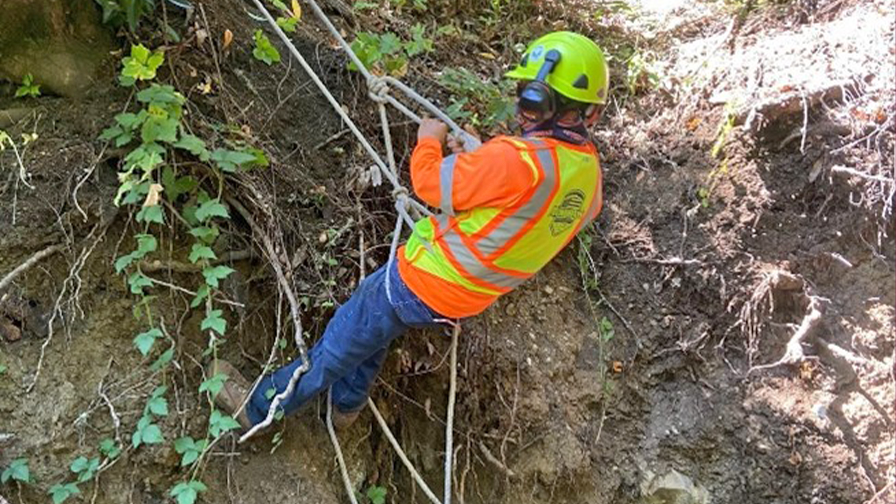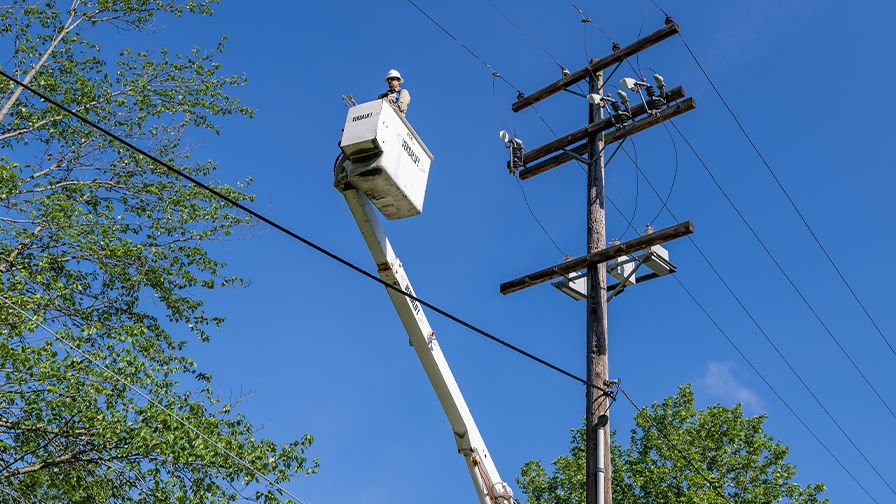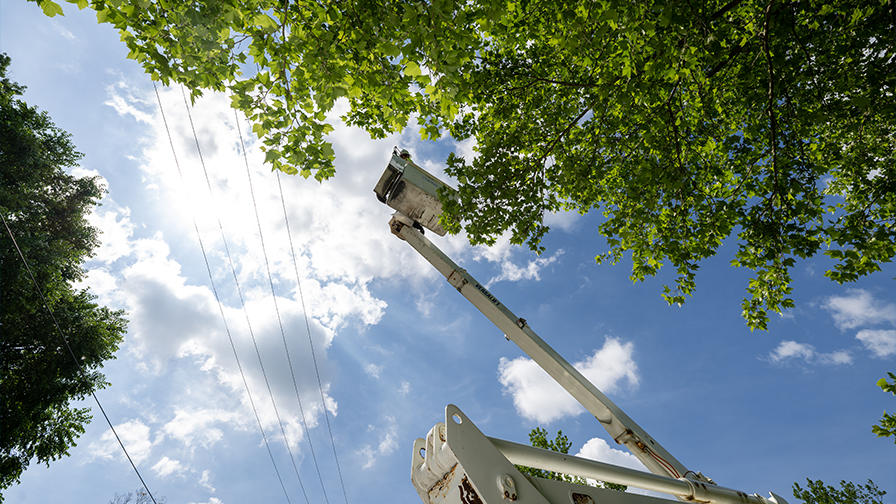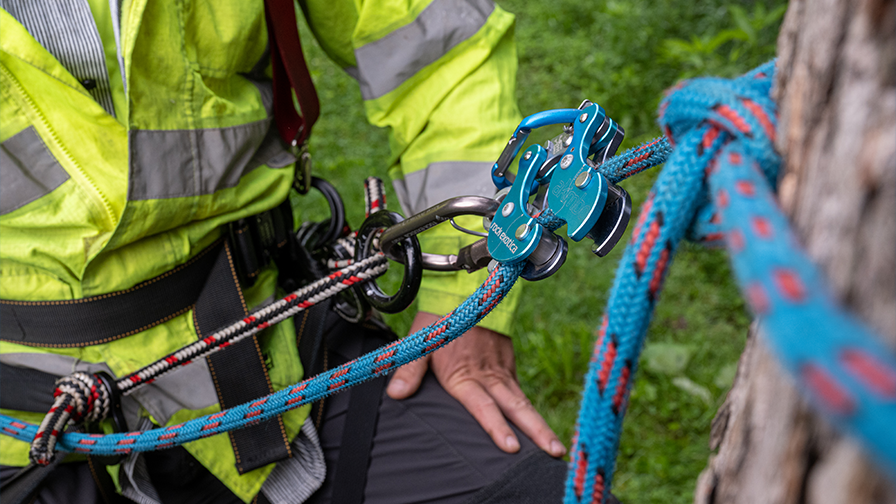Five-Minute Meeting: Preventing Falls on Steep Terrain
Five-Minute Meeting: Preventing Falls on Steep Terrain
 While we discuss fall prevention primarily in the context of climbing and aerial lift safety, falls can occur in other ways as well, and we should take care to assess the risk of falls on job sites with steep inclines.
While we discuss fall prevention primarily in the context of climbing and aerial lift safety, falls can occur in other ways as well, and we should take care to assess the risk of falls on job sites with steep inclines.
A regular hazard discussed on most job sites is “slips, trips, and falls.” Some workers might discuss this topic to “check off the boxes” of a job briefing, but these hazards are very real and can lead to injury or death. According to the Centers for Disease Control and Prevention (CDC), falls are the leading cause of injury for all age groups, with over half of all falls occurring during slope or stair walking. At similar angles, slope walking has a greater fall risk than stair walking due to greater ankle dorsiflexion (the backward bending and contracting of your foot and overall stability). Falls can be fatal at any height and on any terrain depending on the person’s size, weight, and the part of the body that hits the ground.
On job sites with steep terrain, you may find yourself on a steep walking surface with loose dirt. What happens when you slip on the loose dirt and fall? In the best-case scenario, you slide down the hill without injury; however, what if you aren’t that lucky and you twist an ankle, break an arm, or roll through a patch of poison oak or blackberries? Maybe you fall and hit your head on a rock, get impaled by debris, cause someone else to start sliding as well, or drop your equipment and it hits someone.
When we walk up stairs, we step onto multiple level surfaces and we typically have a handrail to support us; however, when we are on a job site, the walking surfaces are seldom level and there is no railing.
To prevent injury or fatality, workers should first estimate the steepness of the incline that they are working. On any slope less than 20 degrees, workers should ascend and descend using a hiking pole or a hand line (guide rope). On any slope between 20-45 degrees, workers should ascend and descend using a hand line (guide rope) or a harness. On slopes greater than 45 degrees, workers should ascend and descend using a harness.
 A worker can use a knot called a “bowline on a bight” as a harness when ascending and descending steep slopes in place of an actual climbing harness if necessary.
A worker can use a knot called a “bowline on a bight” as a harness when ascending and descending steep slopes in place of an actual climbing harness if necessary.

Related Articles

Five-Minute Meeting: Working Around Secondary Wires and Low Voltage Lines Though the American National Standards Institute (ANSI) Z133 allows us to “avoid contact” with secondary lines or those under 750 volts, we need to exercise caution around these lines because they carry lethal voltage. Secondaries have lower voltage than primaries. We can distinguish them by[...]
Read More
Five-Minute Meeting: Working Overhang When conducting pruning operations, even for small branches, the best practice is to remove branches in a “total branch control” manner using ropes or by reducing the size of the branch you are cutting into a much smaller piece. In a weekly kick-off safety meeting, a utility noted a situation that[...]
Read More
Aerial lifts cannot touch energized lines and arborists must be aware of minimum approach distance (MAD). Learn more.
Read More
Wear, tear, and other damage to equipment can present safety hazards in the field. Equipment maintenance can prevent these safety hazards from arising and is essential for continued safe work with that equipment.
Read MoreSUBSCRIBE
Subscribe to our mailing list to receive updates.
Categories
Recent Posts
- How-To: Learning Knot Basics 02th Aug 2018
- How-To: Tying a Stopper knot 07th Aug 2018
- How-To: Selecting the Right Safety Vest 21th Aug 2018
- How-To: Tying a Slip Knot 04th Sep 2018
- How-To: Inspecting Your Snaps 18th Sep 2018
Training the Next Generation
All our classes are built on industry safety practices. Ready to start learning?